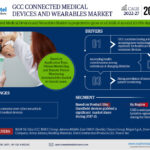Outline
1. Introduction
- Brief Overview of Revenue Cycle Management
- Importance of Automation in Modern Healthcare
2. The Basics of Revenue Cycle Management
- What is Revenue Cycle Management (RCM)?
- Traditional RCM Challenges
3. The Role of Automation in RCM
- Understanding Automation in RCM
- Key Benefits of Automation for RCM
4. How Automation Enhances Revenue Cycle Efficiency
- Reducing Errors and Manual Workload
- Streamlining Billing and Payment Processes
- Speeding Up Claims Processing
5. Reducing Denials and Improving Accuracy with Automation
- How Automation Minimizes Claim Denials
- Ensuring Accuracy and Compliance in Billing
6. Enhancing Patient Experience through Automation
- Automation for Transparent Billing
- Simplifying Payment Processes for Patients
7. Data-Driven Insights and Predictive Analysis
- Leveraging Automation for Data Collection
- Predictive Analytics for Revenue Forecasting
8. Challenges and Considerations in RCM Automation
- Initial Costs and Integration
- Data Security and Compliance Concerns
9. Future of Automation in Revenue Cycle Management
- Trends Shaping the Future of RCM Automation
- The Growing Role of AI and Machine Learning
10. Conclusion
- Recap of Automation’s Impact on RCM
- Final Thoughts on the Future of Automated RCM
11. FAQs
- What is Revenue Cycle Management?
- How does automation reduce claim denials?
- What are the main benefits of RCM automation?
- Is automation in RCM costly?
- How does automation improve patient experience?
Article
Introduction
Revenue Cycle Management (RCM) is the lifeline of healthcare finance, ensuring a steady stream of revenue to sustain operations. In today’s fast-paced healthcare environment, automation has come to the forefront as an invaluable tool in revolutionizing RCM. With increased complexities in billing, claim processing, and compliance, manual processes are often not enough to keep up. So, how exactly is automation transforming Revenue Cycle Management, and why should healthcare providers pay attention?
Automation in RCM helps streamline processes, reduce errors, and improve efficiency, leading to better financial outcomes. This article explores how automation is reshaping RCM, enhancing accuracy, reducing denials, and ultimately supporting a seamless revenue flow for healthcare facilities.
The Basics of Revenue Cycle Management
What is Revenue Cycle Management (RCM)?
Revenue Cycle Management (RCM) encompasses the entire financial journey of a patient’s healthcare service, from initial appointment scheduling and insurance verification to final billing and payment collection. RCM ensures that healthcare organizations get reimbursed accurately and efficiently for the services they provide. This process is crucial for maintaining cash flow, avoiding financial losses, and enabling providers to focus on patient care.
Traditional RCM Challenges
In traditional RCM, healthcare providers face various challenges. The manual processing of claims is time-consuming, prone to errors, and often leads to claim denials. Staff shortages and outdated technology can slow down the process, making it difficult to keep up with administrative tasks, especially as healthcare regulations continue to evolve. With these challenges in mind, the adoption of automation presents a viable solution for many healthcare providers.
The Role of Automation in RCM
Understanding Automation in RCM
Automation in Revenue Cycle Management involves the use of software, AI-driven tools, and machine learning algorithms to handle repetitive tasks, streamline processes, and reduce the need for manual intervention. By automating tasks such as patient registration, billing, coding, and claim submission, RCM automation can help healthcare providers reduce errors, enhance efficiency, and improve their financial health.
Key Benefits of Automation for RCM
- Efficiency: Automation speeds up routine processes, enabling faster billing cycles and reducing the time between service and payment.
- Accuracy: Automated systems minimize human error, ensuring that claims are submitted correctly the first time, which can reduce the risk of denials.
- Cost Savings: By reducing the need for extensive manual labor, automation can lower administrative costs over time.
How Automation Enhances Revenue Cycle Efficiency
Reducing Errors and Manual Workload
One of the most significant benefits of automation in RCM is the reduction of human error. With automated systems handling data entry, coding, and claim submissions, the risk of mistakes decreases dramatically. Fewer errors mean fewer denied claims, which results in faster payments and improved cash flow.
Streamlining Billing and Payment Processes
Automation can streamline billing and payment processes, making it easier for patients and providers alike. Automated billing systems generate accurate invoices promptly, and digital payment options make it simpler for patients to pay online. This reduces administrative burden and provides patients with a more convenient billing experience.
Speeding Up Claims Processing
Automated claim processing systems reduce the time it takes to submit, review, and approve claims. Instead of waiting weeks for approvals, providers can receive payments faster, improving their financial stability. This quick turnaround not only supports better cash flow but also lessens the time patients have to wait for final billing resolutions.
Reducing Denials and Improving Accuracy with Automation
How Automation Minimizes Claim Denials
Claim denials are a significant pain point in traditional RCM, often resulting from errors in patient information, coding inaccuracies, or eligibility verification issues. Automation tackles these problems by ensuring that all necessary data is collected and verified before claims are submitted. Automated systems can also detect potential issues, allowing staff to address them proactively, which reduces the likelihood of claim denials.
Ensuring Accuracy and Compliance in Billing
With healthcare regulations constantly changing, compliance is a top priority. Automation helps maintain billing accuracy by adhering to the latest coding and regulatory guidelines. Automated RCM systems stay updated with the latest healthcare policies, ensuring that claims are compliant and reducing the risk of legal and financial penalties.
Enhancing Patient Experience through Automation
Automation for Transparent Billing
Transparent billing is essential for patient trust. Automated RCM systems offer clear, easy-to-understand billing statements, helping patients see exactly what they are paying for. This transparency is particularly valuable as it reduces confusion, decreases billing-related complaints, and fosters a positive relationship between providers and patients.
Simplifying Payment Processes for Patients
Patients increasingly expect a seamless, digital-first experience when it comes to billing and payments. Automation offers multiple payment options, including online and mobile payments, making it more convenient for patients to manage their medical bills. This convenience improves the likelihood of timely payments, which positively impacts the provider’s revenue cycle.
Data-Driven Insights and Predictive Analysis
Leveraging Automation for Data Collection
Automated RCM systems collect large volumes of data from billing records, patient accounts, and payment histories. This data is invaluable for healthcare providers as it allows them to gain insights into their financial performance, identify trends, and pinpoint areas for improvement. With accurate, real-time data, providers can make informed decisions that benefit their financial health.
Predictive Analytics for Revenue Forecasting
Beyond data collection, automation can utilize predictive analytics to forecast future revenue trends. By analyzing historical payment data, automated systems can identify patterns and predict seasonal fluctuations, enabling providers to better plan their finances. Predictive analytics also help in optimizing staffing, resource allocation, and budgeting.
Challenges and Considerations in RCM Automation
Initial Costs and Integration
While automation offers many benefits, it does require a significant initial investment. Healthcare providers must evaluate their budget and assess the potential ROI before implementing automated RCM solutions. Integration with existing systems may also present challenges, as outdated infrastructure can hinder the seamless adoption of automated tools.
Data Security and Compliance Concerns
Handling sensitive patient data requires strict adherence to privacy laws and regulations like HIPAA. Automation in RCM introduces new security considerations, as digital systems are vulnerable to cybersecurity threats. Providers must ensure that automated RCM systems have robust security measures to protect patient data and maintain compliance.
Future of Automation in Revenue Cycle Management
Trends Shaping the Future of RCM Automation
As technology advances, the role of automation in RCM will only grow. Emerging trends such as robotic process automation (RPA), AI-driven claim analysis, and real-time patient eligibility checks are expected to become standard in RCM. These advancements will continue to make RCM processes faster, more accurate, and less reliant on manual intervention.
The Growing Role of AI and Machine Learning
AI and machine learning (ML) are set to transform RCM even further by enabling systems to learn and adapt. ML algorithms can identify patterns in claim denials, predict payment delays, and provide recommendations for process improvements. AI-driven RCM systems have the potential to manage revenue cycles with unprecedented precision and efficiency.
Conclusion
Automation is undeniably transforming Revenue Cycle Management, offering healthcare providers a solution to streamline billing, reduce claim denials, and improve financial performance. While there are challenges to consider, the benefits of automation are clear: increased efficiency, accuracy, and patient satisfaction. As automation technology continues to evolve, the future of RCM looks promising. For healthcare providers, embracing automation is more than just a trend—it’s a strategic move toward a sustainable financial future.
FAQs
1. What is Revenue Cycle Management?
Revenue Cycle Management (RCM) is the process of managing the financial transactions in healthcare, from patient registration to final billing and payment.
2. How does automation reduce claim denials?
Automation reduces claim denials by ensuring accurate data entry, patient eligibility






